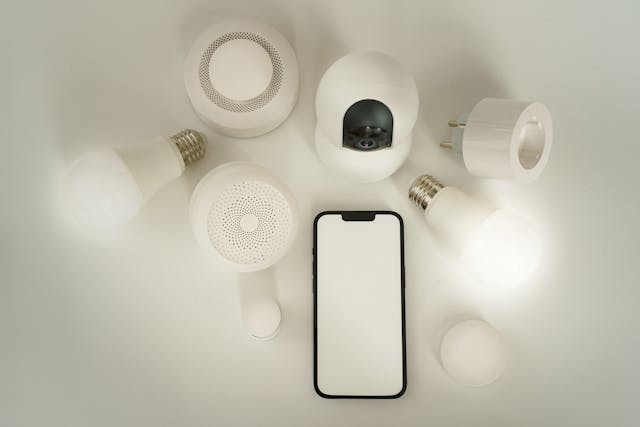Keeping your home safe is so important for the wellbeing of everyone in your household and with a few simple checks and changes you can protect yourself from common accidents, burglaries and even fire hazards.
Here is a clear, concise and practical home safety checklist to keep your home safe and comfortable for your loved ones.
1. The fire safety of your home
One of the most dangerous threats to any home is fire. It is critical to take steps to reduce the risk and act quickly if an outbreak occurs.
Smoke detectors and carbon monoxide detectors
Test your smoke detectors monthly. They should be installed on every floor, especially near bedrooms. Replace the batteries once a year and consider purchasing models with a long battery life. Carbon monoxide detectors are just as essential, especially if you use gas appliances or have a fireplace. These detectors can be life-saving and should also be checked regularly.
Fire extinguishers
Fire extinguishers should be placed in easily accessible places, such as the kitchen or garage. Make sure you know how to use them properly. A fire blanket in the kitchen is also a good idea to quickly extinguish small cooking fires.
Escape plan
Have an emergency escape plan and practice it with your family. Make sure everyone knows at least two ways to leave each room and that there is a meeting place outside the house. A fire escape may be required for upstairs rooms.
2. Preventing falls and possible hazards
Falls are one of the most common causes of injuries at home, especially in older adults and young children. There are simple adjustments to make your home safer.
Stair lifts and balustrades
If you have a multi-storey house and someone has difficulty with stairs, a stair lift can make a big difference. They significantly reduce the risk of falls and give people with limited mobility greater independence. Always keep stairs free of clutter and check that handrails are strong and secure.
Non-slip mats and rugs
Bathrooms, kitchens and entryways are places where floors can become slippery. Non-slip mats help reduce the chance of slipping. Handles or underlays keep rugs from moving, which can also help prevent tripping.
Good lighting
Adequate lighting is essential to prevent falls, so make sure hallways, stairwells and outdoor paths are well lit. Any motion sensor lights are useful for outdoor areas or for people who get up during the night.
3. Child-proof your home
Young children love to explore, which can sometimes get them into trouble. Childproofing your home will keep your little ones safe as they grow.
Cabinet locks and outlet covers
Use safety locks on cabinets containing cleaning products, sharp objects or medications. All unused electrical outlets should have plug covers to keep little fingers safe.
Corner protectors
Tables, shelves and other furniture with sharp corners can be dangerous and corner protectors can help reduce the risk of injury if a child falls. Secure heavy furniture, such as bookshelves, to the wall to prevent tipping.
What about window safety?
Always keep windows closed and locked when small children are around. Window protectors or stoppers can prevent them from opening too far, reducing the risk of falls.
4. Make your house ‘burglary-proof’
Home security doesn’t have to be complicated or expensive, but it can make a big difference.
Secure your doors and windows
Doors must have a sturdy frame and be equipped with good quality locks. With a peephole or doorbell camera you can see who is at the door before you open it. Make sure windows have working locks and use security bars for basement or ground floor windows if necessary.
Potential outdoor lighting
Bright outdoor lighting can deter burglars, so install lighting around entrances, garages and dark corners of your home. Motion-activated lights are especially effective at deterring potential intruders.
Alarm systems
If you don’t already have one, consider investing in a home security system. It doesn’t have to be luxurious; even a basic model can be enough to keep thieves at bay. For extra peace of mind, you can also install a video doorbell.
5. Keeping the outdoors safe
The exterior of your home also needs attention to make it safe and reduce the risk of accidents.
Prune all the trees and shrubs you have
Overgrown plants can provide hiding places for intruders. Prune shrubs, especially around windows and paths. Also keep trees away from power lines to prevent damage during storms.
Check your paths and steps
Cracked or uneven pavement can pose a tripping hazard. Repair any damage to paths and remove moss or wet leaves from steps to make them safer to walk on. In the colder months, keep salt on hand to prevent ice from forming on paths and driveways.
A little time spent at security checks can make a world of difference. These safety checklist measures can help you be better prepared for unexpected emergencies and reduce the risk of accidents at home.





